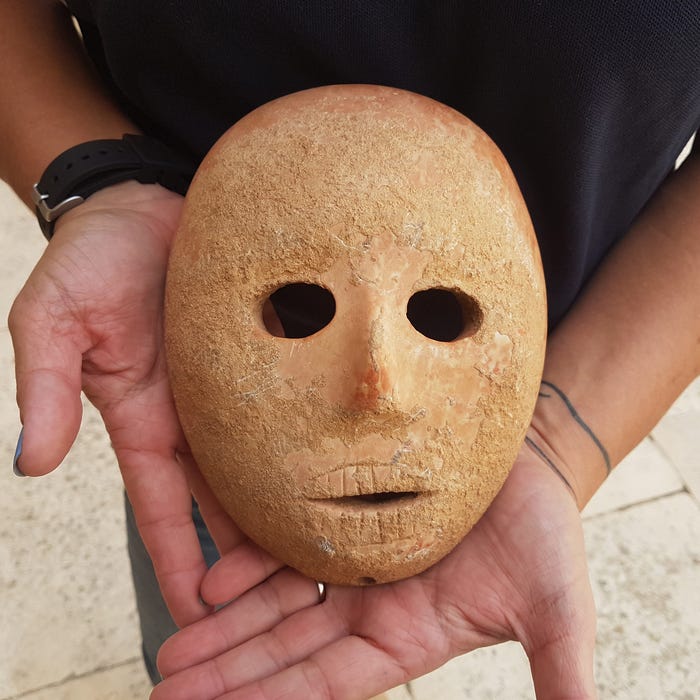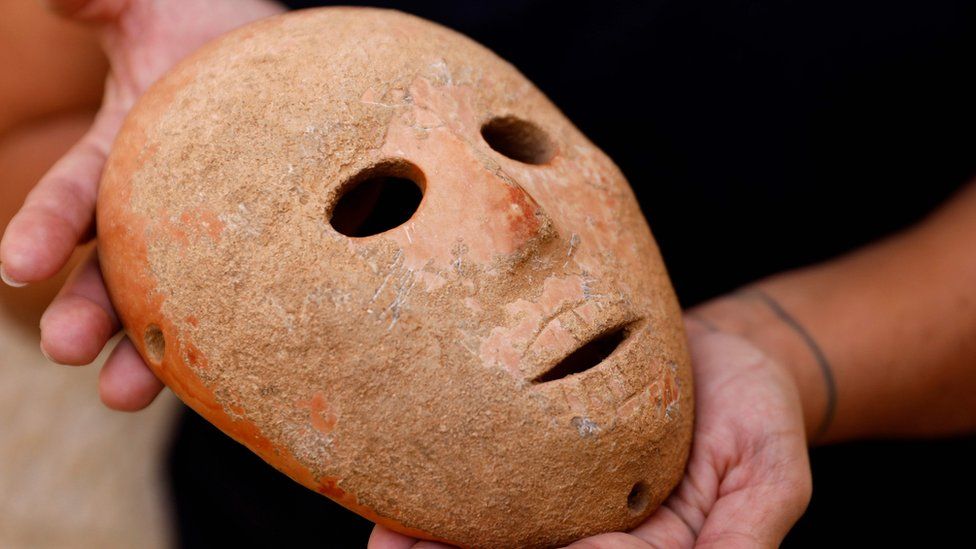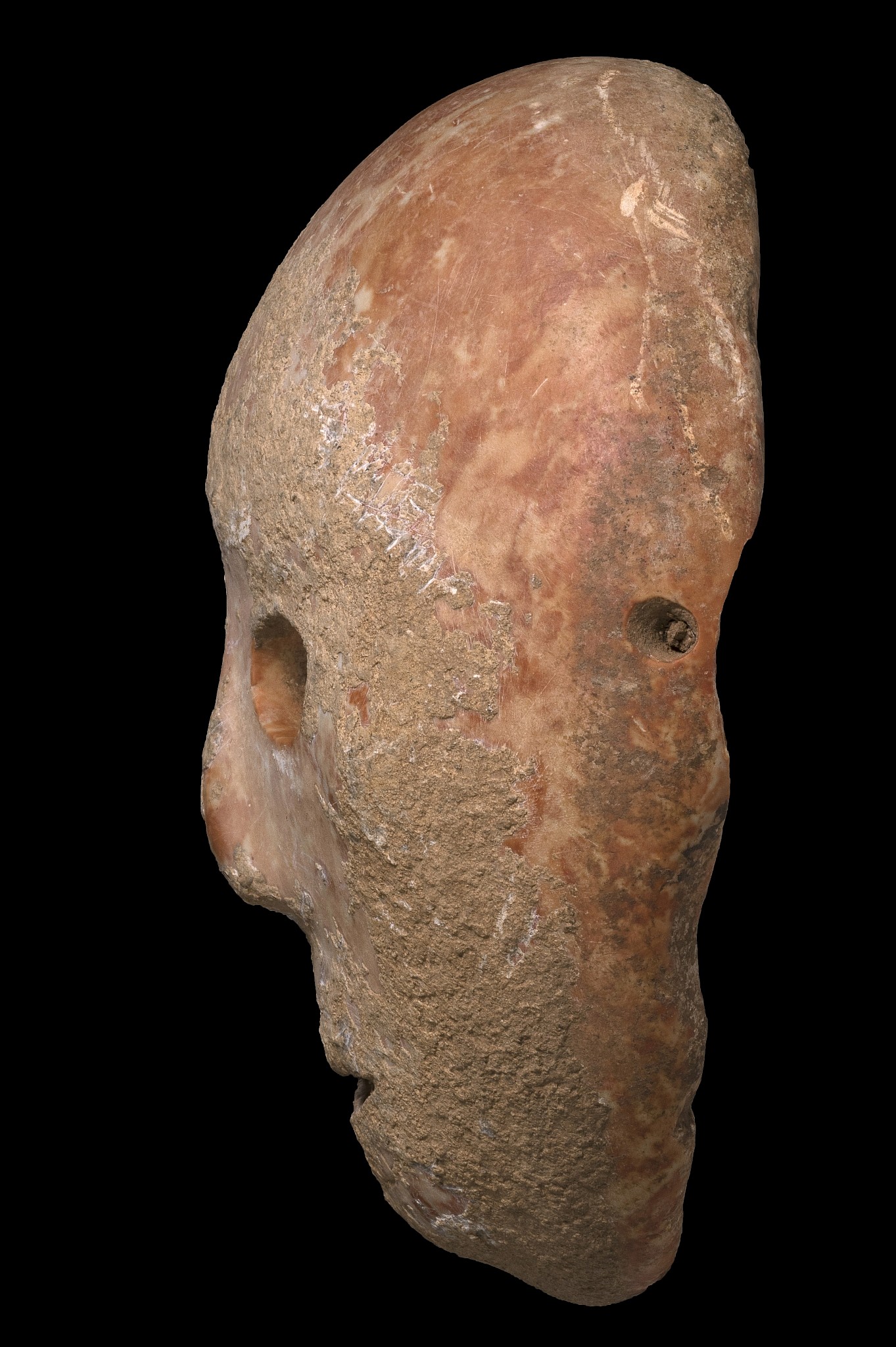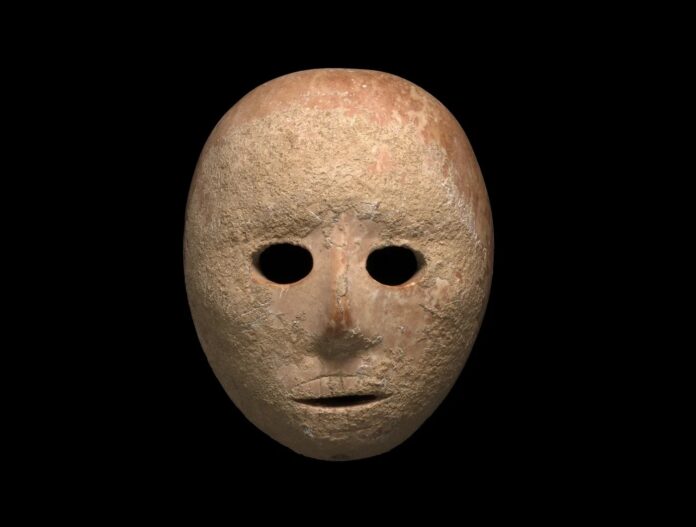The discovery of a 9,000-year-old stone mask offers a fascinating glimpse into the Neolithic period, a pivotal time when humanity transitioned from nomadic hunter-gatherers to settled agricultural societies. Unveiled by the Israel Museum in Jerusalem, this artifact not only showcases the advanced craftsmanship of ancient peoples but also provides invaluable insights into the cultural and religious practices of early human communities.
The Rediscovery of the Mask

The recovery of the mask was made possible by the determined efforts of the IAA’s Antiquities Theft Prevention Unit. This specialized unit, dedicated to preventing the looting of archaeological sites and recovering stolen antiquities, received information about a rare stone mask illegally excavated in early 2018. Acting on this tip, the unit successfully retrieved the mask from looters.
According to the Times of Israel, investigations suggested that the mask was originally found at an archaeological site in the Pnei Hever region of southern Har Hevron, in the Hebron Hills near the Judean desert. Crafted from limestone, the mask was meticulously smoothed and shaped to resemble a human face, complete with detailed cheekbones and teeth. Its impressive finish, achieved using basic tools, highlights the sophisticated craftsmanship of the society that created it. Four holes bored into the edges of the artifact suggest it was either worn in ceremonies or displayed publicly.
Analysis and Significance

A preliminary study of the mask indicates its Neolithic origin, dating back 9,000 years, a time of significant societal transformation. This period saw the emergence of settled agricultural communities, accompanied by a surge in religious activities, rituals, and sacred art. Stone masks like this one are linked to the agricultural revolution, a time when Stone Age societies shifted from hunter-gatherer lifestyles to more sedentary existences.
The human-like features of the mask suggest it was used in ancestor worship rituals, a practice common in the region during this era. Evidence from other archaeological findings indicates that human skulls were often buried under the floors of dwellings, plastered, and decorated to resemble living faces. This mask, resembling a human face, was likely used to honor deceased relatives and played a role in rituals associated with ancestor worship.
The Importance of the Recovered Mask

Identifying the origin of the mask underscores the significance of the Hebron Hills and the Judaean wilderness as centers for the production and use of these masks. The site where the mask was unearthed is now the focus of an archaeological dig, which promises to shed light on the material culture and daily life of the society that created it.
With only fifteen similar masks discovered to date, the majority of which are held in private collections and inaccessible to scholars, this mask offers a rare opportunity for experts to study and understand a critical phase in human civilization. It provides valuable insights into the worldview of our ancient ancestors as they navigated the complexities of a new societal structure and way of life.
Conclusion
The 9,000-year-old stone mask unveiled by the Israel Museum is more than just an artifact; it is a window into the dawn of ancient societies. Its recovery and study illuminate the cultural and religious practices of early human communities, highlighting the advanced craftsmanship and deep spiritual life of our ancestors. As ongoing archaeological efforts continue to explore its origins, this mask will undoubtedly contribute to a deeper understanding of human history and the evolution of civilization.
